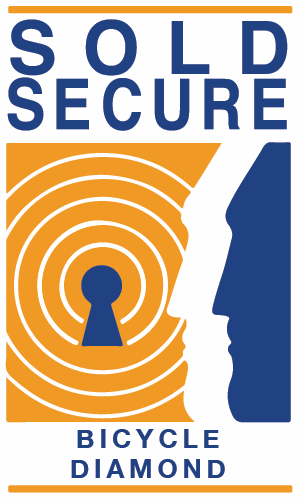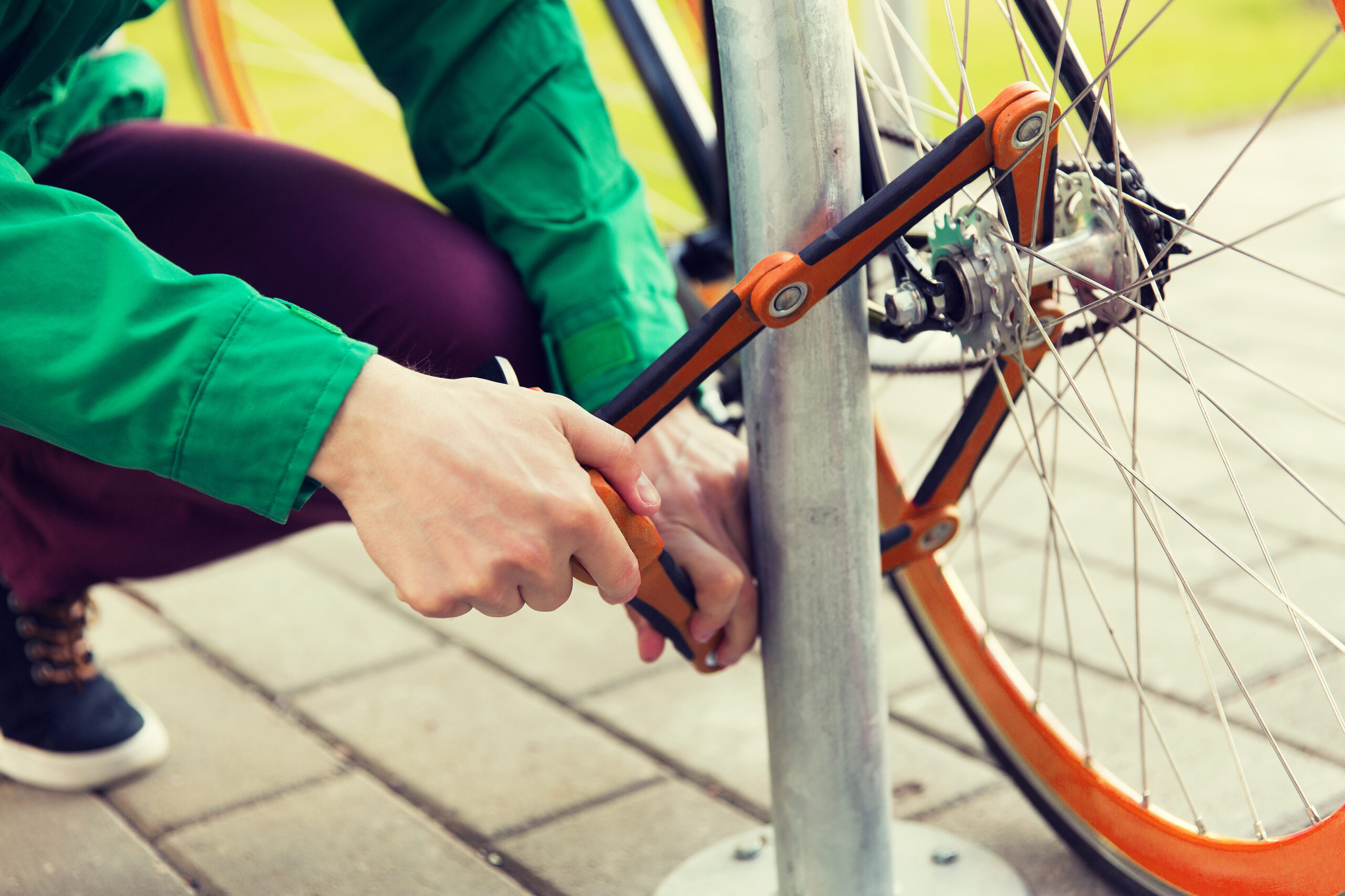Cycle insurance from Cover4Cycles provides protection for damage and theft to your bike, both at home and away from home – one of the key advantages of specialist bicycle insurance over home contents insurance.
Leaving your bike without meeting the security requirements outlined in this article will result in your policy being rendered null and void. To ensure you access the full coverage benefits, adhere to the stipulated guidelines.
Whilst specific security requirements depend on whether you keep your bike at your insured location or away from it, you must always use an approved lock.
What is an Approved Lock?
Our policy requires you to secure your bike with an approved lock that matches the value of your bike:
- Bikes valued up to £250: Bronze SoldSecure
- Bikes valued between £50 to £1500: Silver SoldSecure
- Bikes over £1500: Gold SoldSecure

The minimum SoldSecure category required for your bicycle is listed on your Certificate of Insurance. For more details on locks that meet the required category, visit SoldSecure.com.
It’s also important to note that using a lock different from the one specified in your policy will invalidate your insurance.
Always secure your bike with an approved lock through the frame to an immovable object.
Who are SoldSecure?
SoldSecure is an independent security testing and certification company. They analyse locks and other security devices, awarding them with a bronze, silver, gold or diamond rating depending on their resistance to theft. When customers purchase a lock that is SoldSecure approved, they know they have reliable protection.
What is an Immovable Object?
An immovable object is a fixed structure that cannot be easily removed, lifted or taken apart, such as:
- Metal or concrete posts
- Heavy-duty railings and fencing
- Permanent bike racks
- Solid walls
You also must not be able to lift the bike, under or over, without having broken the approved lock.
Storage Requirements
At Insured Location
The ‘insured location’ refers to the place where you normally live and store your bike, as outlined on your certificate of insurance.
Inside the Insured Location
Your bike must be kept in a secure space accessible only to you and your family.
All security devices must be operational when the insured location is unoccupied.
Outbuildings
You can store your bike in a shed, garage or out house as long as it’s fully enclosed and is made of brick, stone, concrete, timber or metal – this also includes bike storage boxes. The outbuilding must also be within the boundaries of the insured location and at least one of the following security measures must be met:
- The outbuilding must have a5-lever mortice deadlock, multi-point locking system, or a 5 lever padlock and be securely locked at all times. External hinges and hasps should ideally be fixed with tamper-proof or concealed fixings, or secured from the inside.
- All bikes must be secured through the frame with an approved lock to an immovable object within the outbuilding.
Communal Areas
If you store your bike in a communal area such as a resident’s cycle shelter, this area must only be accessible to residents and their guests.
Balconies
The balcony must not be accessible from the ground.
Other Locations
Any other circumstances, location or security precaution must be agreed with in writing.
Away From Insured Location
At a Friend or Relative’s Home, or Temporary Residence
If you’re visiting a friend or relative overnight or for an extended visit, you can store your bike in their home for the duration of your visit (subject to a maximum of 90 days in the UK or a policy-specified trip duration abroad).
The aforementioned security requirements apply.
Other Circumstances
Bikes must not be left unattended unless secured with an approved lock to an immovable object through the frame, and also must not be left unattended for more than 24 hours.
Inside or Attached to a Vehicle
The vehicle in or on which you keep your bike must be road legal and insured. If you leave your bike in or on the vehicle between 9pm and 6am, it must be fitted with:
- Thatcham category 1 alarm/immobiliser
- Thatcham category 2 immobiliser, or
- Category 3 steering wheel lock
Inside A Vehicle
If you are transporting your bike inside a vehicle, all the doors, windows, and other openings must be closed, securely locked, and keys removed. An alarm that is manufacturer-approved or Thatcham-approved must also be installed.
Attached to a Vehicle
Your bike must be secured through the frame by an approved lock to a cycle rack which is properly and securely fitted to either the roof, rear or towbar of the vehicle. The vehicle security requirements remain the same.
Motorhomes (Overnight Storage)
Follow the vehicle security as practically as possible considering alarms might not be fully set when you’re occupying your motorhome.
In Summary
Having the right security not only deters theft and reduces the chance of accidental or malicious damage, it also ensures your bike insurance stays valid. Using an approved lock, storing your bike correctly and keeping proof of your security measures will mean you can have utmost peace of mind.

